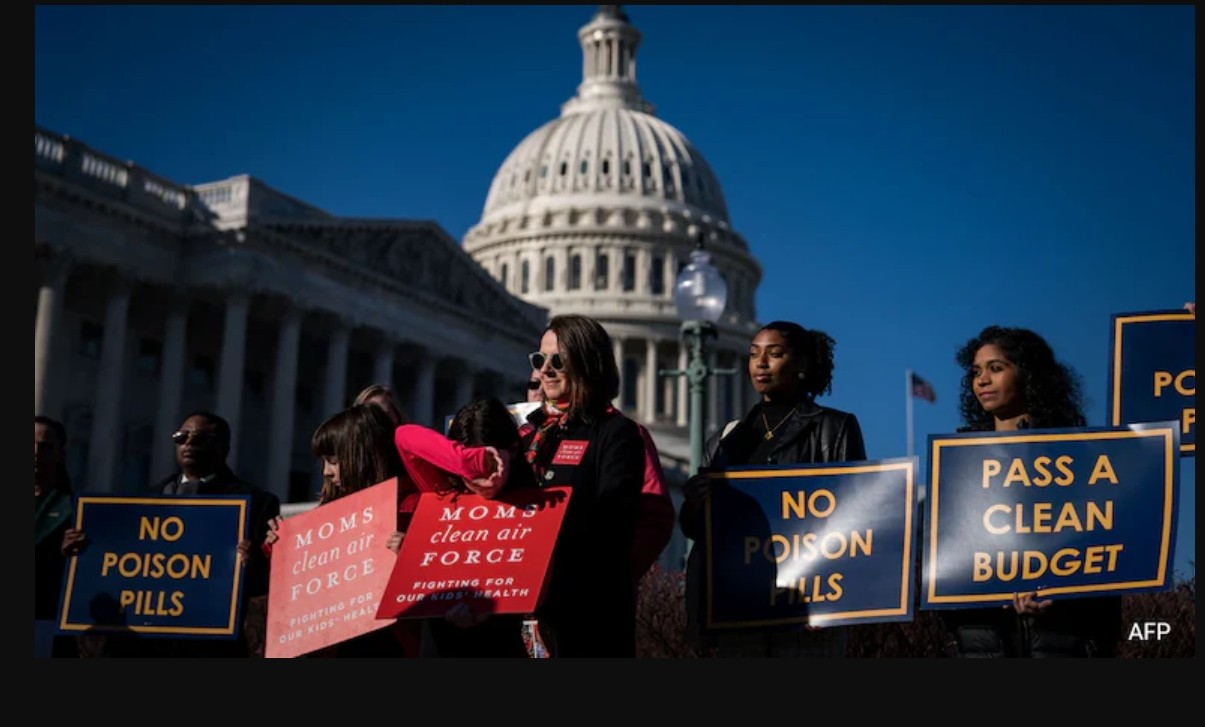What is the Government Shutdown: Update, Why do Happen, and Who Gets Affected
 |
| What Happens In A US Government Shutdown? |
The U.S. House of Representatives recently rejected a Republican-led funding bill aimed at preventing a government shutdown. This bill, which was supported by President-elect Donald Trump, failed to pass as Democrats refused to accommodate his sudden demands. The rejection of this bill has left the next steps uncertain, with federal agencies set to run out of funds and begin closing down soon.
| An estimated 875,000 workers could be furloughed, while 1.4 million would keep working as they are considered essential, said Shai Akabas, executive director of the Bipartisan Policy Center's economic policy program. |
Latest Update on the U.S. Government Shutdown
House Speaker Mike Johnson and Republican leaders are now scrambling to devise a new plan to keep the government open. They have less than 36 hours before the deadline to fund the government or face a shutdown. The new proposal includes a continuation of government funds along with a controversial provision to raise the nation’s debt limit
President-elect Trump has been vocal about his opposition to the original bipartisan funding deal, which included $100.4 billion in disaster relief and economic assistance for farmers. He has demanded that any new plan also address the debt ceiling, a move that has complicated negotiations
The situation remains fluid, with lawmakers working against the clock to find a solution. If no agreement is reached, vast swaths of the federal government will shut down, and many federal employees will be furloughed.
| The US government is hurtling towards a shutdown ahead of the Christmas holiday, after President-elect Donald Trump and Elon Musk scuppered a cross-party deal to keep federal agencies running. What happens if Congress fails to pass a spending bill to keep the lights on past a Friday night deadline? |
What Is a Government Shutdown?
A government shutdown happens when the U.S. federal government runs out of funding to operate. This typically occurs when Congress (the House of Representatives and the Senate) and the President cannot agree on a budget or temporary funding by a set deadline.
During a shutdown:
- Non-essential government services stop.
- Many federal workers are furloughed (sent home without pay).
- Essential services, like military operations and air traffic control, continue but often without immediate pay for workers.
Why Do Government Shutdowns Happen?
A government shutdown happens for two main reasons:
-
No Budget Passed:
Congress must pass 12 annual appropriations bills to fund government agencies. If these bills are not approved by the deadline (usually the end of the fiscal year on September 30), the government runs out of funding.
-
Political Disagreements:
Shutdowns are often the result of political standoffs. For example:
- One party may demand funding for a specific project or program (e.g., border wall funding).
- The other party may refuse to agree, leading to gridlock.
Without an agreement, parts of the government shut down.
How Does a Shutdown Work?
When the government shuts down:
-
Agencies Plan Closures:
Each agency creates a contingency plan to determine which operations will stop and which will continue.
-
Essential vs. Non-Essential Services:
- Essential services include law enforcement, military operations, and hospital care. Workers in these areas continue to work but may not get paid until the shutdown ends.
- Non-essential services like national parks, passport offices, and museums close.
-
Furloughs:
- Federal employees who are not considered “essential” are placed on unpaid leave.
- Workers are usually paid retroactively once the shutdown ends, but this is not guaranteed.
 |
| A shutdown would likely affect hundreds of thousands of federal workers. |
What Are the Effects of a Government Shutdown?
1. Federal Workers
- Furloughs: Many federal employees are temporarily out of work.
- Delayed Paychecks: Even essential workers, like TSA agents, may work without pay.
2. Public Services
- National Parks: Most parks close, disrupting tourism.
- Passports and Visas: Processing stops or slows down significantly.
- Scientific Research: Federally funded research projects are delayed.
3. Economy
- Lost Wages: Workers without pay reduce their spending, hurting local economies.
- Delays in Contracts: Businesses relying on government contracts may face delays in payments.
4. Public Confidence
Shutdowns often reduce public trust in the government, as they highlight political dysfunction.
Notable Government Shutdowns in U.S. History
1. The 2013 Shutdown (16 Days)
- Reason: Disagreement over funding for the Affordable Care Act (Obamacare).
- Impact: Around 800,000 federal workers were furloughed, and national parks were closed.
2. The 2018–2019 Shutdown (35 Days)
- Reason: Dispute over funding for a border wall between the U.S. and Mexico.
- Impact: The longest shutdown in U.S. history, affecting about 800,000 federal employees and causing $11 billion in economic losses.
3. The 1995–1996 Shutdowns (27 Days Total)
- Reason: Conflicts between President Bill Clinton and Republicans over spending cuts.
- Impact: Disruptions in federal services like passport processing and health programs.
Who Gets Affected the Most?
1. Federal Employees
- Around 2 million civilian federal workers are impacted, including TSA agents, IRS workers, and national park staff.
2. Everyday Citizens
- Tourists may be unable to visit national parks or landmarks.
- Families relying on government assistance, like food programs, may experience delays.
3. Businesses
- Contractors working with the government face delays in payments.
- Local businesses near federal buildings or parks see fewer customers.
How Does a Shutdown End?
A shutdown ends when Congress and the President agree on a funding bill. This can happen in one of two ways:
-
Passing a Full Budget:
Congress approves all 12 appropriations bills, and the President signs them into law.
-
Passing a Continuing Resolution (CR):
A temporary measure to keep the government funded at current levels while negotiations continue.
FAQs About U.S. Government Shutdowns
1. How long do government shutdowns last?
Shutdowns can last a few hours, days, or even weeks. The 2018–2019 shutdown lasted 35 days, the longest in history.
2. Do federal workers get paid during a shutdown?
Essential workers continue working without pay and are typically paid retroactively once the shutdown ends. Furloughed workers also often receive back pay, but it’s not guaranteed.
3. What services stop during a shutdown?
Non-essential services like national parks, passport processing, and federal grant programs stop. Essential services like law enforcement, air traffic control, and Social Security continue.
4. Can Congress still get paid during a shutdown?
Yes, members of Congress continue to receive pay because their salaries are mandated by law.
5. Does the military get paid during a shutdown?
Military personnel continue working but may face delays in receiving their pay.
6. Are Social Security benefits affected?
Social Security checks continue to be sent out, but some administrative functions may slow down.
7. How does a shutdown affect travel?
TSA and air traffic controllers continue working, but staffing shortages may cause longer wait times at airports.
8. Does a shutdown save the government money?
No, shutdowns often cost more due to disruptions, delayed projects, and retroactive pay for furloughed workers.
9. How often do shutdowns happen?
Since 1976, there have been over 20 shutdowns, but most were short. Major shutdowns lasting more than a day are less common.
10. Can a shutdown be prevented?
Yes, by passing funding bills or continuing resolutions on time. However, political disagreements often delay the process.
| A government shutdown is a serious event that disrupts millions of lives and costs the economy billions of dollars. While it highlights the importance of passing a budget, it also underscores the political conflicts that can prevent it. By understanding the causes, effects, and ways to resolve a shutdown, citizens can better grasp how this process impacts their daily lives. |






























